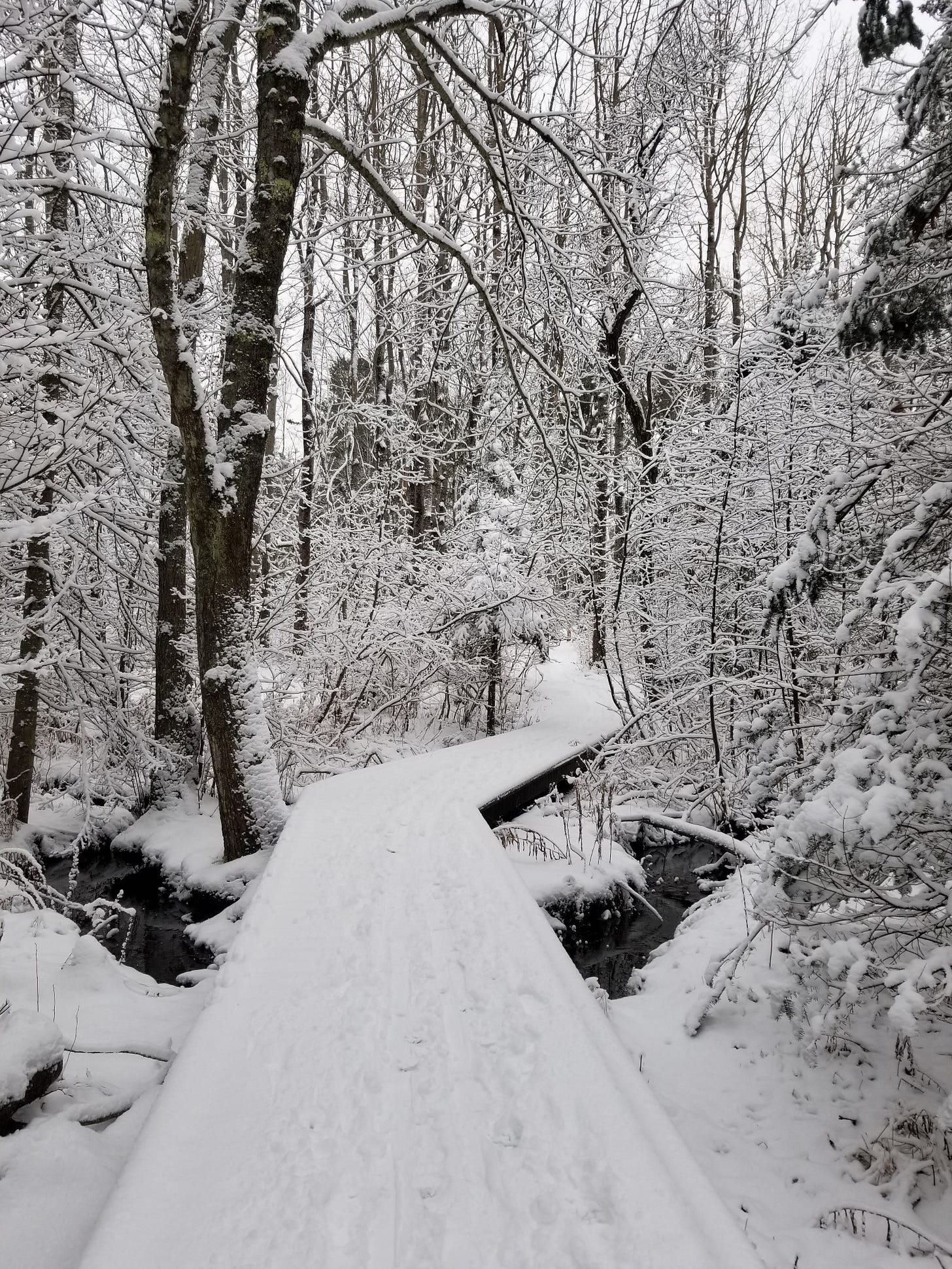According to the timekeeping system of the ancient Celts, Nature has been slowly and quietly wending its way through the season of Samhain ("sow-en"). In my northern clime, the winds have shaken the last of the leaves from the trees and the chipmunks and groundhogs have burrowed in before the bitterest cold sets in. As the sun weakens in the northern hemisphere, the energies are those of descent: loss, death, decay, the end of a cycle.
On December 21, we are at winter's midpoint - the Winter Solstice. Although many view this point as the beginning of winter (i.e., the coldest months of the year), the Celts saw the shortest day as the end of the descent into darkness. After this point, the days ever so gradually began to lengthen as the sun slowly regained its strength.
The Celtic Year is divided into halves: one darker, one lighter, or one where the Feminine energies are more prominent and one where more Masculine energies are prevalent. The dark half is known as Giamos. The astronomical date varies, but the Celtic New Year begins on the cross-quarter holiday of Samhain at the end of harvest season and roughly halfway between the Autumn Equinox and the Winter Solstice. The Winter Solstice marks the second festival of the Celtic Year.
After the sun's descent, it appears to "stand still" (sol=sun, stice=stand still) at the Winter Solstice, rising in the same location in the sky for three days. December 20/21 is the shortest day of the year and the seemingly endless longest night. In modern-day culture, the Winter Solstice equates to "the return of the light." However, the Celts also recognized the importance and necessity of the darkness as the place where new life begins: in the depths, the dark, the ground, the womb, in the deep Feminine. They revered the dark half of the year because it is in the darkness that the seed is planted and, after a period of dormancy, begins to germinate. At the Winter Solstice, the tomb at Samhain becomes the womb of the next life cycle.
“There are as many nights as days, and the one is just as long as the other in the year's course. Even a happy life cannot be without a measure of darkness, and the word 'happy' would lose its meaning if it were not balanced by sadness.” ~ Carl Jung
The Winter Solstice is a culmination and a turning point, but it is not easy. Whether literally or metaphorically, all of us must endure winter's darkness. It is the times when we hit rock bottom, the depth of our sufferings. We can feel utterly alone, separated from who and what we hold dear, confused, helpless, and hopeless. Often our only certainty is that this is the end.
"It is always darkest before the dawn."
The three days of darkness at the solstice is described as the "dark night of the soul." We come to the void through deep loss and grief, unsure of the way forward or out. Most of us resist being in this space of emptiness. When all is at its bleakest, light and hope are elusive. What am I supposed to do? When is this going to end? How will I find my way? Instead of sitting in this space with curiosity and trust, we tend to rush forward and stay busy-busy-busy, distracting ourselves from the discomfort. But in doing so, we miss the opportunity for inspiration and intentional beginnings.

The Winter Solstice invites us into the darkness to sit in the void. Earth, the Great Mother, gathers us into her embrace. We are encouraged to be still and listen. We listen to the softest of whispers and wait for the light to illuminate the darkness. What energies are slowly gathering for the next creation, the next dream? After the chaos of destruction and death, what has been seeded and is waiting to be birthed?
For the next six weeks, most of Nature is pared down, burrowed in, sleeping and dreaming. To help align you with these energies, ask yourself: What has been cleared away in my life since Samhain? Am I able to sit in the quiet darkness and listen to what is softly calling to me? Do I know what my soul is dreaming into this new space? What fulgent seed has been buried deep inside, biding its time, waiting until the conditions are right to germinate in the spring?
Written December 2024.





